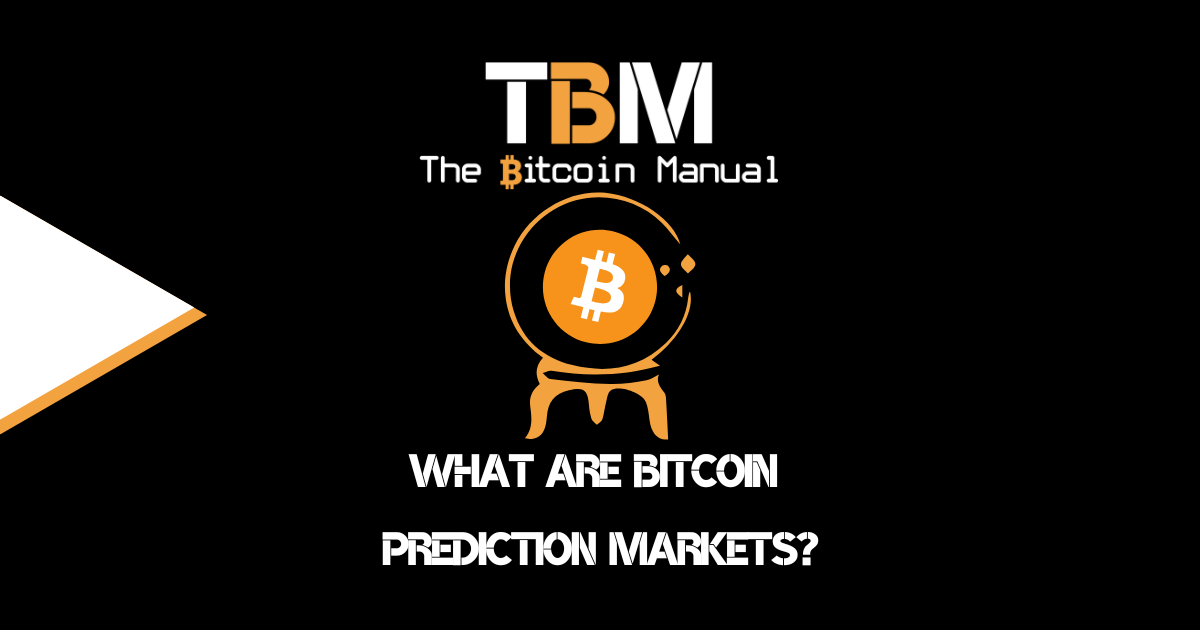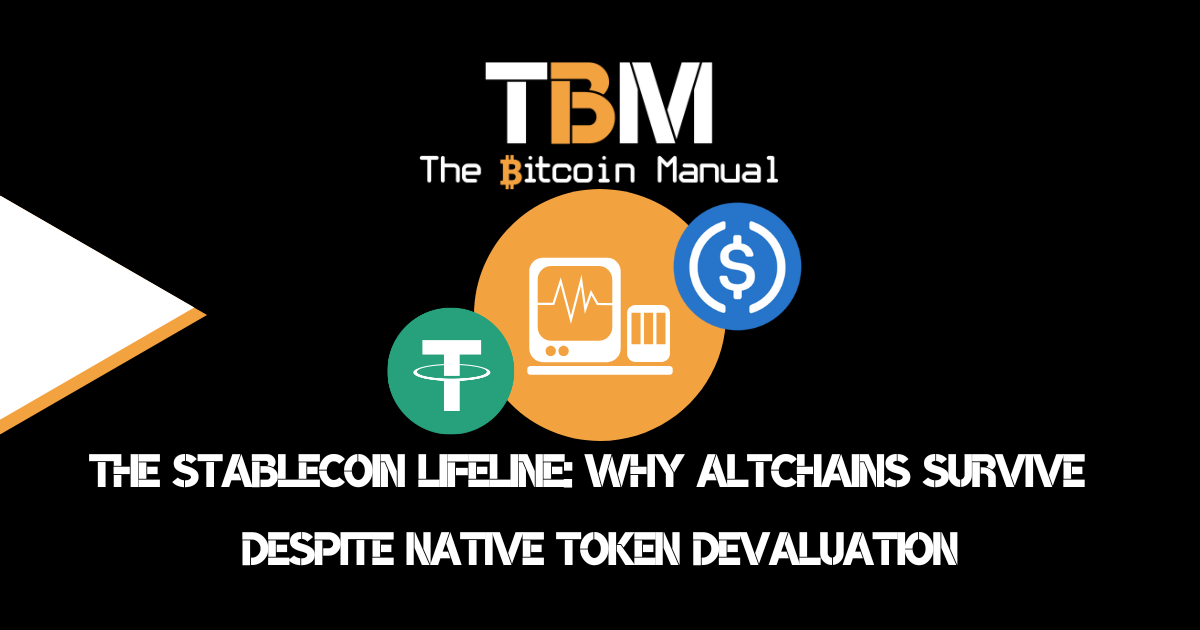We’ve all sat around the dinner table with friends and family before, predicting everything from sporting events and political outcomes to movie box office performances, or even something as simple as “I bet 10 bucks I can flip this bottle over and have it land upright”?
It’s in our nature to love placing little bets on future outcomes. It’s a harmless form of entertainment, but it can get a little violent when your younger brother fails to pay up.
Prediction markets have taken this concept and formalised it, emerging from the fringes of academia and finance to become a mainstream phenomenon, capturing the attention of investors, politicians, and curious observers worldwide.
These platforms, where users can bet on the outcomes of future events, have experienced explosive growth and are fundamentally changing how we think about forecasting and collective intelligence.
Why?
The fact that these contracts have an element of randomness to the outcome means they’re not quite gambling, since a central entity (the house) doesn’t nudge the odds.
They are a crossbreed between gambling and futures trading.
What Are Prediction Markets?
Prediction markets, also known as betting markets, information markets, decision markets, idea futures or event derivatives, are open markets that enable the prediction of specific outcomes using financial incentives.
Think of them as financial markets, but instead of trading stocks or bonds, participants buy and sell contracts based on whether specific events will occur.
These markets typically operate on a simple principle:
Contracts are priced between $0 and $1 (or 0% and 100%), with the price representing the collective probability that an event will happen.
- If you believe an event is more likely than the current market price suggests, you can buy contracts.
- If you think it’s less likely, you can sell.
The Explosive Growth of Prediction Markets
The growth of prediction markets in recent years has been nothing short of remarkable. Prediction Markets are expected to experience significant growth to $17.49 billion in 2025, with data revealing a remarkable 21.52% annual increase in activity.
This surge has been driven by several high-profile events, particularly the 2024 US presidential election and the election of the new Pope, which served as a catalyst for mainstream adoption and taking the market sentiment data seriously.
A prediction market was more accurate in forecasting the 2024 US presidential election than traditional polls and pundits. This accuracy has garnered significant attention from media outlets, researchers, and the general public, leading to increased credibility and participation.
The industry has also seen massive investment flows. A day after futures trading platform Polymarket closed in on a funding round that would value it at more than $1 billion, rival prediction market company Kalshi on Wednesday said it had completed a round valuing it at $2 billion. These valuations reflect the growing confidence in prediction markets as both business ventures and tools for information discovery.
The Appeal of Prediction Markets
Market predictions offer a new way to speculate and put your money where your mouth is. They monetise tribal affiliations, ego, and the willingness to be proven right and profit from it.
Ask anyone who took out a few contracts on an outcome and came out on top? You won’t find a more smug fella around.
I guarantee you that.
1. Opening Up Forecasting
Prediction markets harness the “wisdom of crowds” principle. By aggregating the beliefs and knowledge of many participants, these markets can often produce more accurate forecasts than individual experts or traditional polling methods. The financial incentives ensure that participants have skin in the game, theoretically leading to more thoughtful and honest predictions.
2. Real-Time Information Processing
Unlike traditional polls or expert opinions that may be outdated by the time they’re published, prediction markets update continuously. As new information becomes available, prices adjust immediately, providing a real-time gauge of public sentiment and probability assessments.
3. Profit Potential
For many participants, prediction markets offer an opportunity to monetise their knowledge and insights. If you have expertise in a particular domain or access to unique information, you can potentially profit from your superior forecasting ability.
4. Entertainment and Engagement
Prediction markets add an element of excitement to following current events. Whether it’s politics, sports, or entertainment, having a financial stake in the outcome makes people more engaged with the subject matter.
5. Transparency and Objectivity
Market prices provide a clear, numerical representation of collective beliefs. This transparency can cut through partisan rhetoric and media bias, offering a more objective view of how likely various outcomes really are.
Put together a complete overview of the prediction markets space as many new teams are building in the vertical.
— mikey (@Mikey0x_) August 12, 2024
A quick summary on prediction market categories, their GTM strategies, product updates, some numbers, mechanism explanations, and where we are headed: pic.twitter.com/X17KePhFu5
How do Prediction Markets Work?
There is no single set of rules for how a prediction market should operate, and as new ones roll out, they offer different entry points, cost structures and models.
But from what we’ve seen so far, these platforms tend to structure their offerings as follows:
Event and Outcomes:
- Clearly Defined Event: A prediction market starts with a specific, uncertain future event. This could be anything from the outcome of an election, a company’s sales figures, the price of a commodity by a certain date, or even the weather.
- Binary or Multi-outcome: Most common are binary contracts (Yes/No), where the event either happens or doesn’t. For example, “Will Candidate A win the election?” However, some markets allow for multiple possible outcomes, each with its own contract (e.g., “Candidate A wins,” “Candidate B wins,” “Candidate C wins”).
Contract Structure:
- Fixed Payout: Typically, each “share” or contract in a prediction market has a fixed payout if the predicted outcome occurs, often set at $1. If your prediction is correct, your contract is worth $1 at settlement. If it’s incorrect, it’s worth $0.
- Price as Probability: The key innovation is that the price of the contract on the market reflects the market’s perceived probability of that outcome occurring.
- If a contract for “Candidate A wins” is trading at $0.70, it means the market believes there’s a 70% chance Candidate A will win.
- If it trades at $0.20, the market believes there’s a 20% chance.
- Prices fluctuate between $0.00 and $1.00 (or 0 and 100 cents).
Market Mechanisms:
Prediction markets can employ different mechanisms to facilitate trading:
- Continuous Double Auction (CDA): Similar to traditional stock exchanges, buyers submit bids and sellers submit asks, and trades occur when prices match.
- Automated Market Makers (AMMs): Often used in decentralised prediction markets, AMMs use mathematical formulas (like the Logarithmic Market Scoring Rule – LMSR) to algorithmically set prices and act as a counterparty to trades, ensuring liquidity even in less popular markets.
- Parimutuel Systems: Less common in formal prediction markets, these systems pool all bets, and the winners divide the pool proportionally.
How Prediction Markets Make Money
The business models of prediction markets are fascinating due to the numerous revenue-generating options they offer, and their core product has near-infinite applications.
Transaction Fees
The primary revenue source for most prediction markets is transaction fees. Every time users buy or sell contracts, the platform takes a small percentage of the transaction. This model scales with volume, making growth in user activity directly translate to increased revenue.
Spread Capture
Some platforms act as market makers, earning money from the bid-ask spread. They provide liquidity by offering to buy and sell contracts at slightly different prices, pocketing the difference.
Subscription and Premium Services
Platforms may offer premium features such as advanced analytics, priority customer support, or exclusive market access for paying subscribers. This creates a recurring revenue stream beyond transaction-based income.
Data Monetisation
The aggregated prediction data generated by these markets has significant value. Platforms can sell this information to research institutions, media organisations, corporations, and government agencies that need insights into public sentiment and probability assessments.
Partnership and Advertising Revenue
As prediction markets gain popularity, they become attractive platforms for targeted advertising, especially around major events. Additionally, partnerships with news organisations, research institutions, or other businesses can provide additional revenue streams.
What People Use Prediction Markets For
Simple answer is to make some money, prediction markets are like any financial market, but instead of trading stocks, bonds or commodiites, you’re trading the likelihood of things happening — like who wins an election, or if Bitcoin will hit $2-00,000 by year-end, or who will win the FIFA world cup, or any similar event(s) in due time.
⚡️ INSIGHT: A trader earned $255K on Polymarket by betting “No” on events like Bitcoin hitting $150K, Ethereum reaching $4K, and Solana hitting $250. pic.twitter.com/dN6PolzDfx
— Cointelegraph (@Cointelegraph) July 7, 2025
Depending on the time before the event is settled, the number of participants, the number of contracts issued, and the volume of contracts purchased, prices can change, and so can the payouts.
Political Forecasting
Political events remain one of the most popular categories in prediction markets. Users bet on election outcomes, policy decisions, approval ratings, and other political developments. The 2024 US presidential election demonstrated the power of prediction markets in this domain, with many platforms outperforming traditional polling.
Economic Predictions
Market participants forecast economic indicators such as inflation rates, employment figures, interest rate decisions, and market movements. These predictions can be valuable for businesses, investors, and policymakers trying to understand economic trends.
Sports and Entertainment
From championship winners to award show results, prediction markets cover a wide range of entertainment and sports events. These markets often attract casual participants who may not be interested in political or economic forecasting.
Technology and Innovation
Prediction markets increasingly focus on technological developments, such as AI breakthroughs, product launches, cryptocurrency price movements, and adoption rates of new technologies. This helps companies and investors gauge market sentiment around emerging trends.
Climate and Scientific Events
Some platforms offer markets on climate-related events, scientific discoveries, and environmental policy outcomes. These markets can provide insights into public awareness and concern about various scientific and environmental issues.
Corporate and Business Events
Markets may focus on business outcomes such as merger and acquisition activity, earnings announcements, product launches, and executive changes. This information can be valuable for investors and business strategists.
The Challenges and Criticisms
While prediction markets have gained popularity, they face several challenges:
Regulatory Uncertainty
The regulatory landscape for prediction markets remains complex and evolving. According to Bloomberg News, the Department of Justice is investigating Polymarket for allegedly allowing U.S.-based gamblers to make bets on the website. This uncertainty can limit growth and create compliance challenges.
Market Manipulation
Like any financial market, prediction markets can be susceptible to manipulation by wealthy participants or coordinated groups. This can distort prices and reduce the accuracy of predictions.
Limited Participation
For prediction markets to be most effective, they need diverse participation. If markets are dominated by particular demographic groups or ideological perspectives, the resulting predictions may be biased and even used to shift public sentiment.
Liquidity Issues
Smaller or niche markets may suffer from low liquidity, making it difficult to trade and potentially reducing price accuracy. This can limit the effectiveness of prediction markets for less popular topics.
The Future of Prediction Markets
Prediction markets are becoming a popular tools that allow users to speculate on future events by trading contracts based on real-world outcomes.
The feeling that you’re engaging in a real-world event, combined with the sense that it’s “not quite gambling,” appeals to a wider audience than traditional online casinos, trading apps, or DEFI applications.
It can appeal to a range of pop culture events, making the concept more palatable for people with different interests and affiliations, from politics to sport and more.
As these platforms continue to evolve, we can expect to see several developments:
- Increased Mainstream Adoption: As prediction markets prove their accuracy and utility, we’ll likely see greater acceptance from traditional financial institutions, media organisations, and government agencies.
- Technological Innovation: Advances in blockchain technology, artificial intelligence, and mobile platforms will likely improve the user experience and create new possibilities for prediction market design.
- Regulatory Clarity: As governments grapple with how to regulate these markets, we can expect clearer guidelines that may facilitate growth while protecting consumers.
- Expanded Use Cases: Beyond current applications, prediction markets may expand into areas such as insurance, supply chain management, and strategic planning for businesses and organisations.
- Integration with Traditional Finance: We may see prediction markets increasingly integrated with traditional financial services, creating new investment products and risk management tools.
Where Are The Bitcoin Prediction Markets?
While fiat and altcoin prediction markets make up the majority of the activity, Bitcoin-focused markets have started to open up with a few options available, predominantly in beta.
| Name | Website |
|---|---|
| Delphi Market | https://delphi.market |
| Predyx | https://beta.predyx.com |
| Bitcoin Prediction Market | https://www.bitcoinprediction.market |
Krystal Bull & SureBits
The Suredbits Wallet is a Bitcoin wallet that enables users to build Discreet Log Contracts. Users can create prop bets like Trump vs Harris in the 2024 US Presidential election and more. DLCs are executed on-chain and require a Bitcoin oracle to validate the condition and release the funds.
Krystal Bull enables you to become a Bitcoin oracle, providing real-world information (such as financial markets, sporting events, and elections) to create and settle Bitcoin bets.
The oracle is a crucial component for Discreet Log Contracts (DLC) and you’re trusting that they will remain honest to stay in business, earn a fee, and build up a reputation as a honest actor.
Otherwise, you risk being rug pulled.
Both SureBits and Krystal Bull are applications you can run on your Bitcoin node if you’re using implementations like Umbrel or Citadel.
Predict And Get Paid
Prediction markets represent a fascinating intersection of finance, technology, and social science, but they do have counterparty risk involved.
If you’re a hodler, or have a penchant for getting wrapped up in wacky wagers, you should stay clear and keep your Bitcoin in cold storage.
But if you have some walking around Satoshis, you use for Zaps, spending on a cold brew or buying Bitcoin merch, you might want to throw out a small wager or two every now and then, just to keep things interesting, especially during those boring crab markets or dire bear markets.




